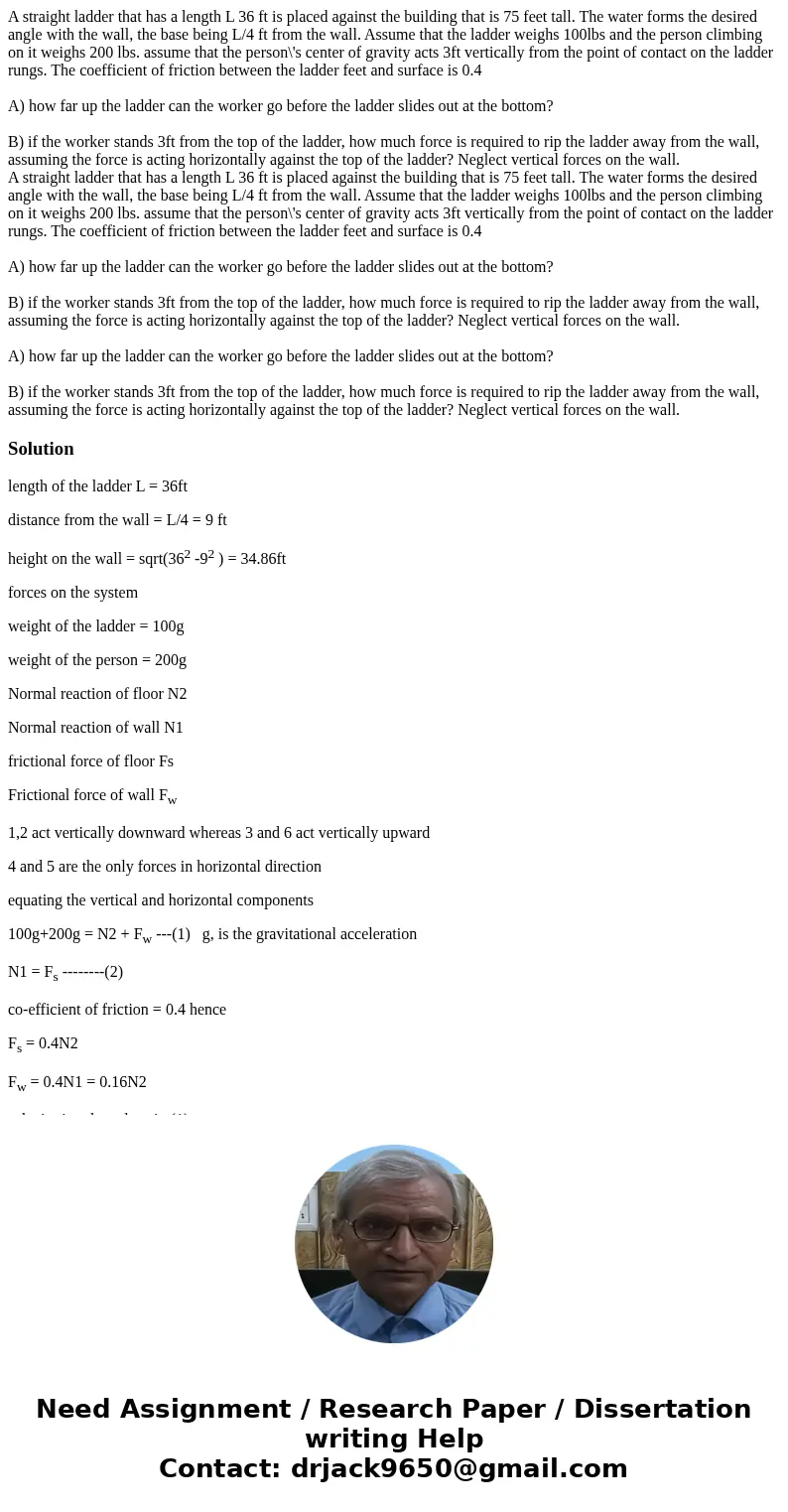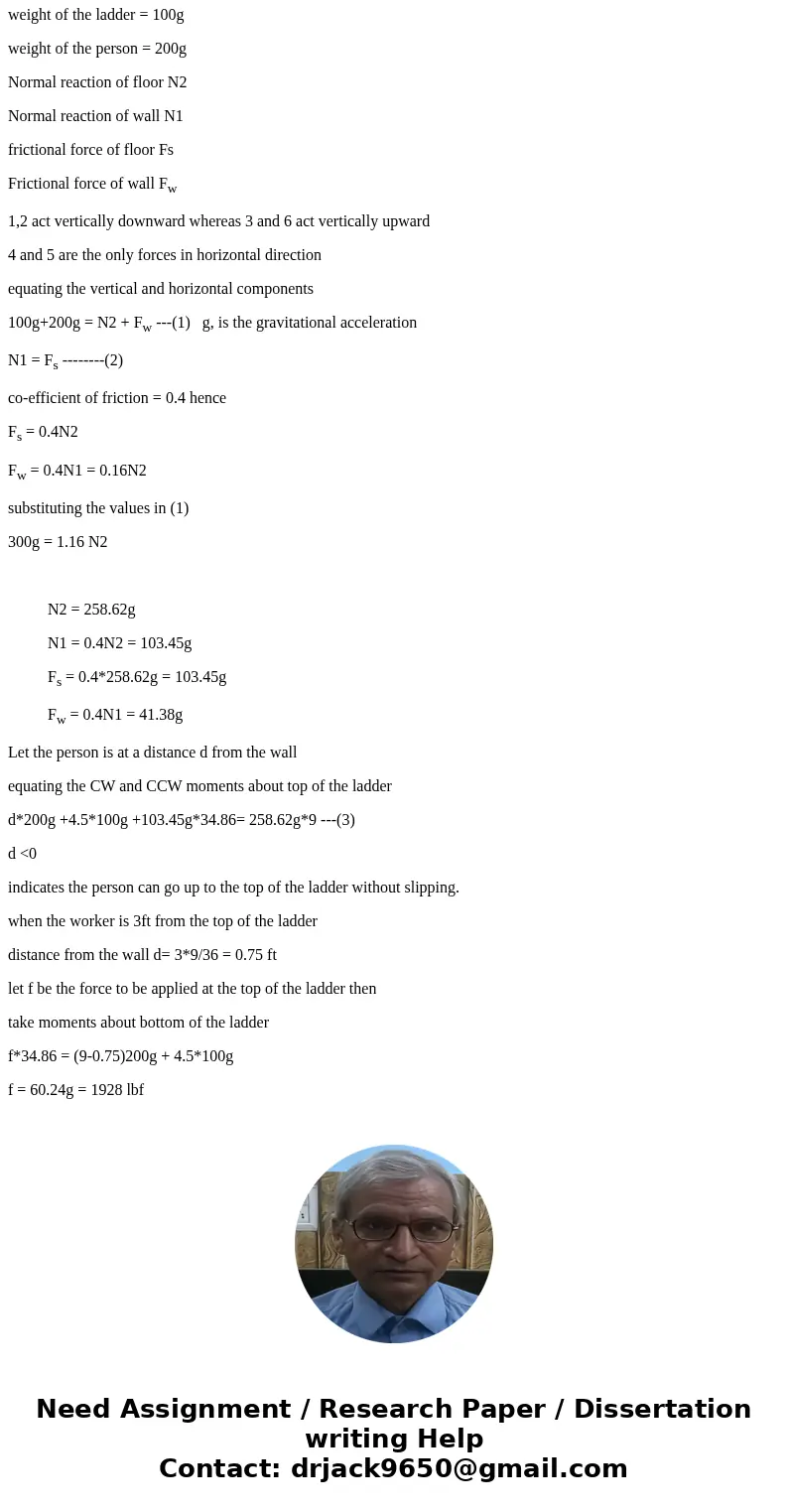A straight ladder that has a length L 36 ft is placed against the building that is 75 feet tall. The water forms the desired angle with the wall, the base being L/4 ft from the wall. Assume that the ladder weighs 100lbs and the person climbing on it weighs 200 lbs. assume that the person\'s center of gravity acts 3ft vertically from the point of contact on the ladder rungs. The coefficient of friction between the ladder feet and surface is 0.4
A) how far up the ladder can the worker go before the ladder slides out at the bottom?
B) if the worker stands 3ft from the top of the ladder, how much force is required to rip the ladder away from the wall, assuming the force is acting horizontally against the top of the ladder? Neglect vertical forces on the wall.
A straight ladder that has a length L 36 ft is placed against the building that is 75 feet tall. The water forms the desired angle with the wall, the base being L/4 ft from the wall. Assume that the ladder weighs 100lbs and the person climbing on it weighs 200 lbs. assume that the person\'s center of gravity acts 3ft vertically from the point of contact on the ladder rungs. The coefficient of friction between the ladder feet and surface is 0.4
A) how far up the ladder can the worker go before the ladder slides out at the bottom?
B) if the worker stands 3ft from the top of the ladder, how much force is required to rip the ladder away from the wall, assuming the force is acting horizontally against the top of the ladder? Neglect vertical forces on the wall.
A) how far up the ladder can the worker go before the ladder slides out at the bottom?
B) if the worker stands 3ft from the top of the ladder, how much force is required to rip the ladder away from the wall, assuming the force is acting horizontally against the top of the ladder? Neglect vertical forces on the wall.
length of the ladder L = 36ft
distance from the wall = L/4 = 9 ft
height on the wall = sqrt(362 -92 ) = 34.86ft
forces on the system
weight of the ladder = 100g
weight of the person = 200g
Normal reaction of floor N2
Normal reaction of wall N1
frictional force of floor Fs
Frictional force of wall Fw
1,2 act vertically downward whereas 3 and 6 act vertically upward
4 and 5 are the only forces in horizontal direction
equating the vertical and horizontal components
100g+200g = N2 + Fw ---(1) g, is the gravitational acceleration
N1 = Fs --------(2)
co-efficient of friction = 0.4 hence
Fs = 0.4N2
Fw = 0.4N1 = 0.16N2
substituting the values in (1)
300g = 1.16 N2
N2 = 258.62g
N1 = 0.4N2 = 103.45g
Fs = 0.4*258.62g = 103.45g
Fw = 0.4N1 = 41.38g
Let the person is at a distance d from the wall
equating the CW and CCW moments about top of the ladder
d*200g +4.5*100g +103.45g*34.86= 258.62g*9 ---(3)
d <0
indicates the person can go up to the top of the ladder without slipping.
when the worker is 3ft from the top of the ladder
distance from the wall d= 3*9/36 = 0.75 ft
let f be the force to be applied at the top of the ladder then
take moments about bottom of the ladder
f*34.86 = (9-0.75)200g + 4.5*100g
f = 60.24g = 1928 lbf


 Homework Sourse
Homework Sourse